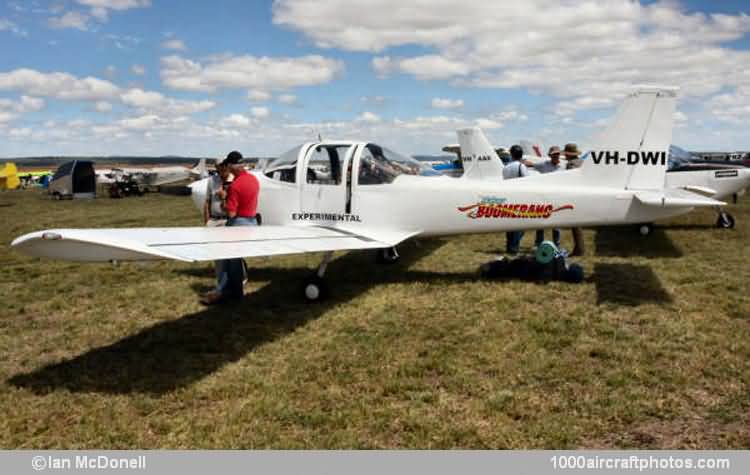The type was designed to meet the FAR23 criteria and was intended as potential replacement for the Piper PA-38 Tomahawk and Cessna 150/152 aircraft and also aimed at possible orders from the RAAF. The construction of a prototype aircraft (plus one for static testing) was started in 2004 and the flying prototype made its maiden flight on July 6, 2006; the type was certificated in December 2007.
The DW200 Whitney Boomerang was the initial basic version which was powered by an 116 hp Lycoming O-235-N2C (with a 125 hp version as optional engine) driving a fixed-pitch propeller. The first production aircraft was completed in September 2007 and at that time over fifteen orders had been received.
The Boomerang was planned to be available with an analogue (VFR) and glass cockpit (IFR) and mid-2007 consideration was given to an IFR variant equipped with an 150-160 hp Lycoming O-320 engine, but these plans did not materialize as Dean-Wilson Aviation halted production after some 6 aircraft had been delivered.
The DW200A Whitney Boomerang had a certified 55lb (25 kg) increased maximum take off weight. Dean-Wilson Aviation went into receivership late 2010 and was reported for sale by mid-2011; after new owners had acquired the rights for the type, the company revived the O-320 version, named it DW200B Boomerang and reportedly started construction of a prototype in 2012."
